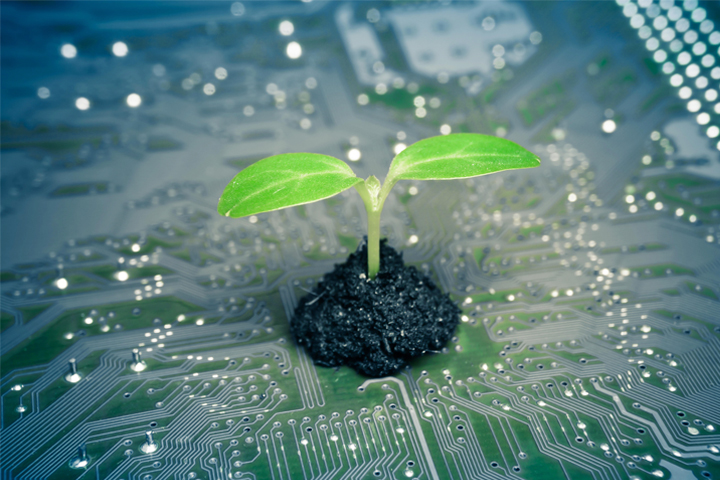Can you imagine a future where the power industry operates using subscription and shared economy models? This shift is already underway, propelled by advancements in renewable energy and the maturation of disruptive technologies like IoT and AI. As per the REN21’s Renewables 2019 Global Status Report, renewable energy is poised to emerge as the primary source of global electricity generation. With an installed capacity of 1,246 GW, renewable energy currently contributes 26% to the global energy mix.1 By harnessing IoT, AI, and blockchain, renewable energy is revolutionizing the traditional power grid, steering it toward becoming the predominant energy source worldwide.
The Introduction of Cellular IoT Paves the Way for Innovative Business Models in the Energy Sector
In the 1990s, Australia embarked on a journey towards energy liberalization. Today, advancements in energy IoT have empowered Australian consumers to select their energy providers. This freedom has led to more flexible energy supply agreements between suppliers and consumers, giving rise to new business concepts like energy bundles and subscriptions.
For instance, the Australian eco-friendly energy retailer Powershop utilizes smart meters connected via cellular IoT networks, enabling real-time meter readings. This allows Powershop to collect data on usage patterns, adjust pricing based on peak hours, and offer customized energy packages. Customers can monitor their energy consumption through a mobile app, gaining insights to manage their power consumption effectively. By opting for Powershop’s energy packages, consumers can benefit from discounts for pre-purchasing power or reducing energy usage during peak hours, aligning with specific energy-saving criteria. Leveraging the smart meters’ real-time tracking capabilities, Powershop can also offer eco-conscious customers green energy options sourced sustainably.
AI-driven Virtual Power Plants Enhance Intelligent Energy Storage and Distribution
In the aftermath of the Fukushima Daiichi nuclear incident in 2011, Japan intensified its push for renewable energy adoption. Between 2003 and 2012, Japan witnessed a modest 5-9% yearly growth in renewable energy capacity. However, post-2012, the nation experienced a renewable energy surge, with growth rates reaching 26%.2
With the growing availability of renewable energy, the Tokyo Electric Power Company collaborated with Toshiba Energy Systems & Solutions to interconnect dispersed renewable energy facilities across Japan with IoT-backed energy storage systems. In 2019, a virtual power plant was established in Yokohama, leveraging AI to determine optimal power storage timings based on weather forecasts and historical consumption data. When electricity demands surge, the system releases stored energy into the smart grid, reducing reliance on non-renewable sources and generating additional revenue by selling surplus electricity.
Another strategy involves integrating intelligent technology into energy storage systems to augment traditional power plants with clean energy solutions and virtual power plants. During periods of heightened electricity demands, virtual power plants can supply green energy stored within energy storage units.
Blockchain Revolutionizes the Traditional Buyer-Supplier Dynamics
Recently established energy trading firms Lition Energie in Germany and LO3 Energy in the United States have pioneered trusted energy exchange platforms based on blockchain technology’s core strengths: decentralization, transparency, and security. Consumers now have the option to procure energy directly from environmentally friendly or cost-effective providers, bypassing intermediaries. Blockchain streamlines transactions, ensuring traceability and security. In the future, consumers may even contract with local energy providers near their residences.
While numerous opportunities lie ahead, the current hindrance is renewable energy’s dependence on government subsidies to maintain competitiveness against conventional energy sources. In Germany, a notable reason for the steep rise in electricity bills in recent years was due to the introduction of a renewable energy surcharge, initially subsidized by the government to promote renewable energy growth. Though this change heightened public awareness on energy conservation, it also led to higher costs for industries and households. Through the integration of advanced smart technologies into their frameworks, renewable energy suppliers can bridge connections with economically and environmentally conscious consumers in novel ways.
References:
1. REN21, Renewables 2019 Global Status Report, Paris, REN21 Secretariat.
2. https://www.re.org.tw, Renewable Energy Information Knowledge Center.
- Not Only for Automobiles: Discovering CANbus Technology in Various Industrial Settings - October 29, 2024
- Boost Your Network Performance: An Exciting Manual to PoE Switches! - September 10, 2024
- Understanding Gigabit Switches: Industrial vs Regular Gigabit - September 4, 2024


